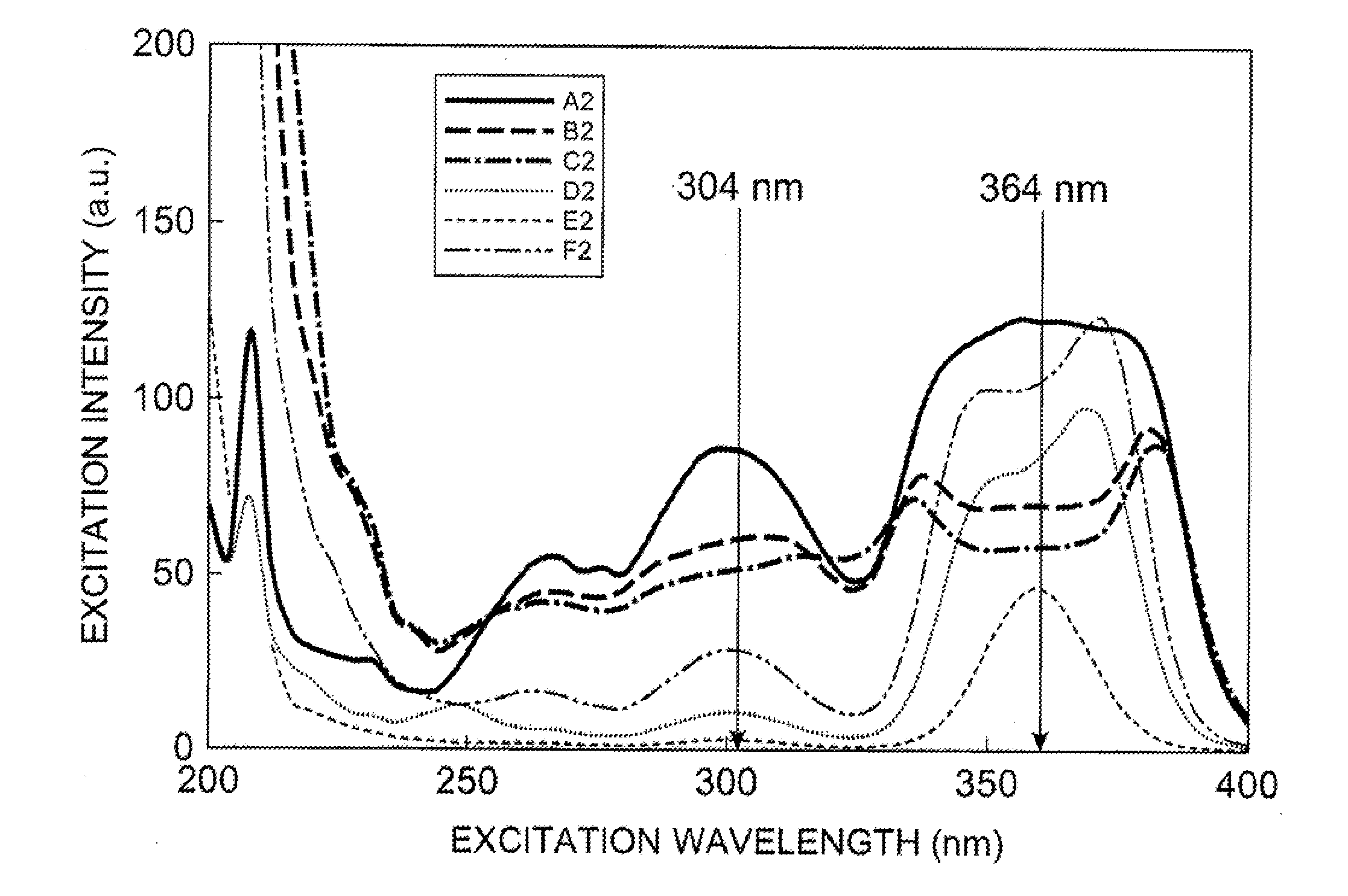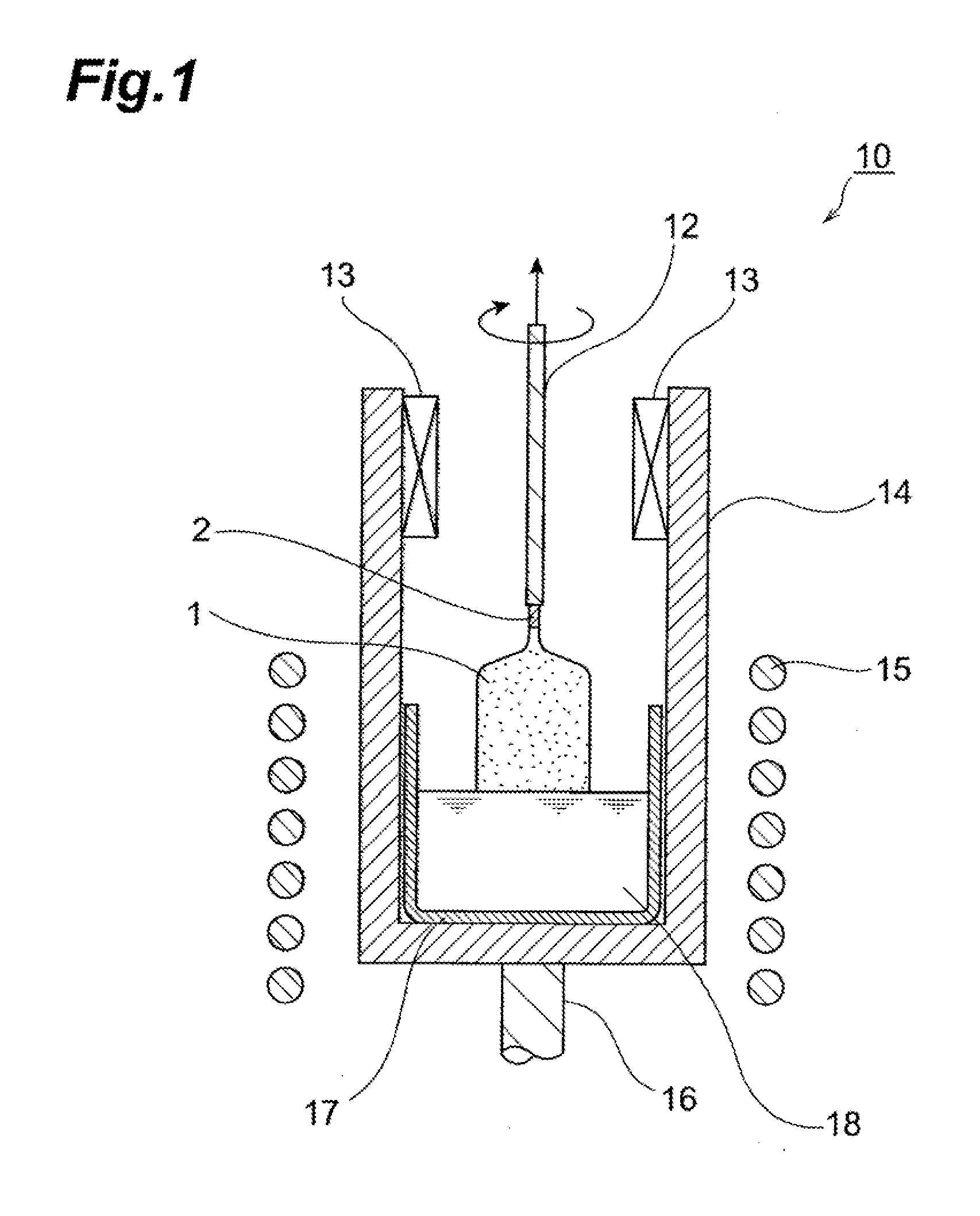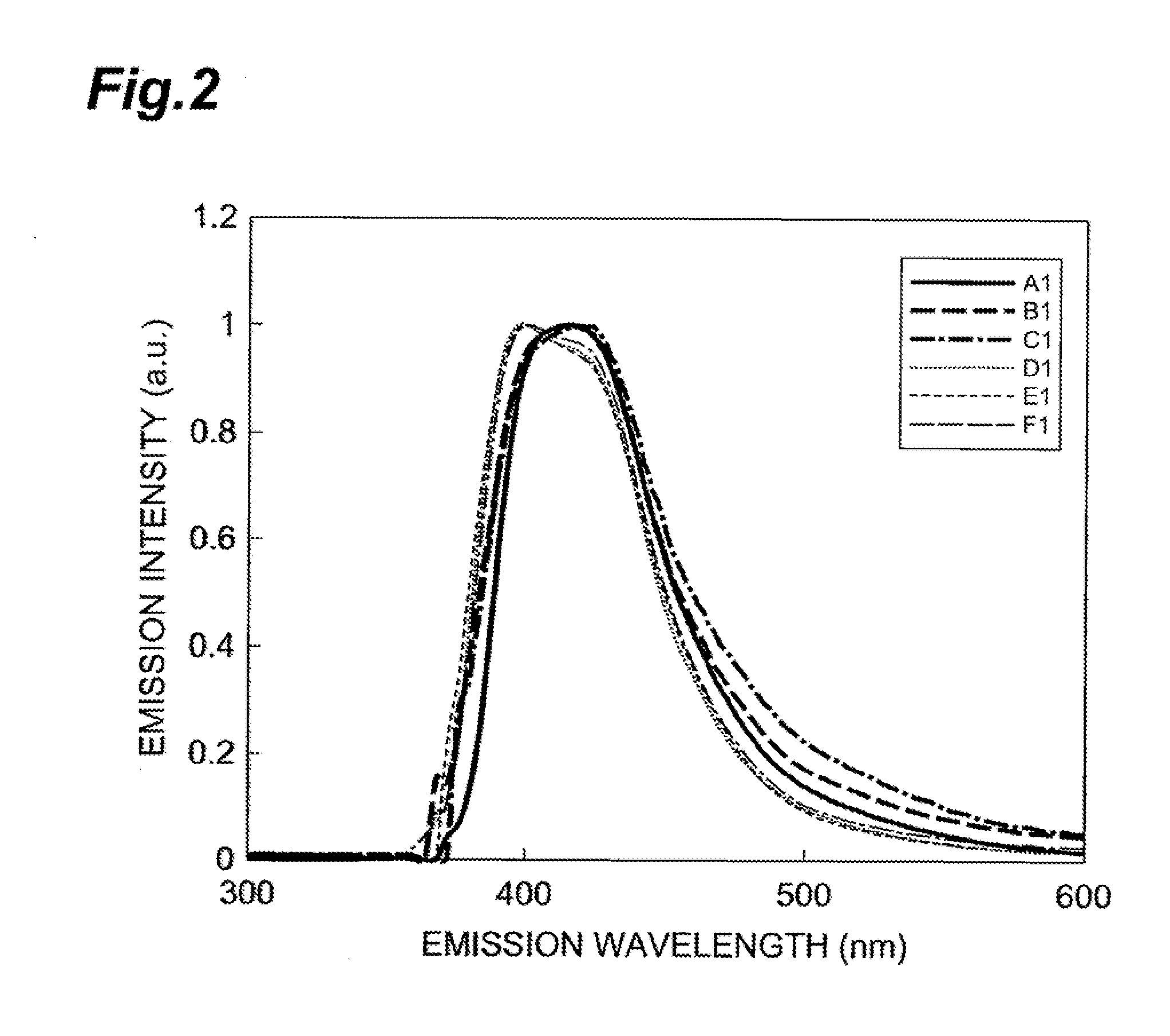Scintillator single crystal, heat treatment process for production of scintillator single crystal, and process for production of scintillator single crystal
a single crystal and scintillator technology, applied in the field heat treatment process for production of scintillator single crystal, can solve the problems of reducing the output of fluorescence, and the problem of reducing the output of a scintillator with a long fluorescent decay time combination, so as to reduce the difference in fluorescent output and reduce the output. the effect of long fluorescent decay time and easy
- Summary
- Abstract
- Description
- Claims
- Application Information
AI Technical Summary
Benefits of technology
Problems solved by technology
Method used
Image
Examples
example 1
Production of Single Crystal
[0084]A single crystal was produced by the Czoehraski method. First, as the starting materials there were combined lutetium oxide (Lu2O3, 99.99 mass % purity), silicon dioxide (SiO2, 99.9999 mass % purity), cerium oxide (CeO2, 99.99 mass % purity) and praseodymium oxide (Pr6O11, 99.99 mass % purity) to a stoichiometric composition of Ln2−(x+y+z)LuxCeyLmzSiO5 (Ln=Lu, Lm=Pr, x=1.996, y=0.003, z=0.001), to obtain a total 500 g mixture. There was also weighed out 0.08748 g of calcium carbonate (CaCO3, 99.99 mass % purity) (corresponding to 0.007 mass % as Ca).
[0085]Next, the 500 g of obtained starting mixture and the weighed out calcium carbonate were loaded into an iridium crucible with a diameter of 50 mm, a height of 50 mm and a thickness of 1.5 mm, and heated in a high-frequency induction heating furnace to the melting point of approximately 2100° C. to obtain a melt. The melting point was measured using an electronic optical pyrometer (Pyrostar MODEL UR-...
example 2
[0093]A scintillator single crystal for Example 2 was produced in the same manner as Example 1, except that the amounts of lutetium oxide and cerium oxide in the starting material were adjusted so that x=1.996 was x=1.9985 and y=0.003 was y=0.0005. The fluorescent properties of the obtained scintillator single crystal were measured by the same procedure as for Example 1. Table 1 shows the compositional formula for this example and the results of measuring the fluorescent properties as averages for each sample.
example 3
[0094]A scintillator single crystal for Example 3 was produced in the same manner as Example 1, except that terbium oxide (Tb4O7, 99.99 mass % purity) was used instead of praseodymium oxide (Pr6O11, 99.99 mass % purity) (Lm=Tb) in the starting material. Based on the results of elemental analysis for the obtained single crystal ingot, the Tb segregation coefficient was 0.7, the Ce segregation coefficient was 0.25 and the Ca segregation coefficient was 0.15. The fluorescent properties of the obtained scintillator single crystal were measured by the same procedure as for Example 1. Table 1 shows the compositional formula for this example and the results of measuring the fluorescent properties as averages for each sample.
PUM
| Property | Measurement | Unit |
|---|---|---|
| temperature | aaaaa | aaaaa |
| fluorescent wavelength | aaaaa | aaaaa |
| fluorescent wavelength | aaaaa | aaaaa |
Abstract
Description
Claims
Application Information
 Login to View More
Login to View More - R&D
- Intellectual Property
- Life Sciences
- Materials
- Tech Scout
- Unparalleled Data Quality
- Higher Quality Content
- 60% Fewer Hallucinations
Browse by: Latest US Patents, China's latest patents, Technical Efficacy Thesaurus, Application Domain, Technology Topic, Popular Technical Reports.
© 2025 PatSnap. All rights reserved.Legal|Privacy policy|Modern Slavery Act Transparency Statement|Sitemap|About US| Contact US: help@patsnap.com



